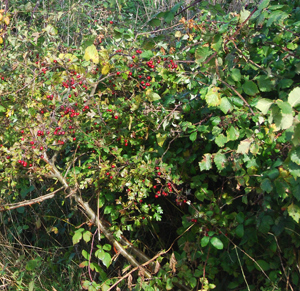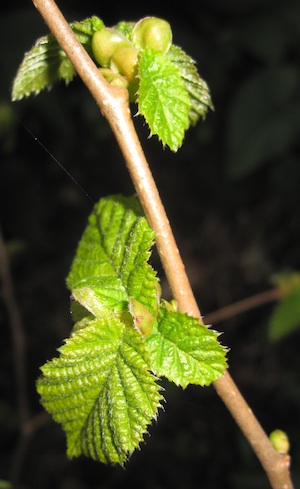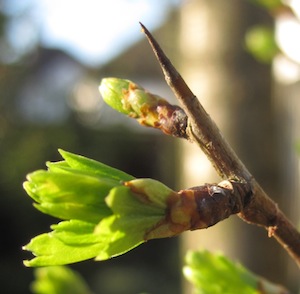Hedgerows

Do you have hedgerows on your land? Have you ever thought of trying to date them? It is sometimes possible to give an approximate age to a hedge using the ‘hedge dating’ system devised by Dr Max Hooper in the 1970's. This is explained in a number of books, such as
The Living History of Our Hedgerows: A Guide to Dating Hedgerows - Lesley Chapman, Brian Steffens (Illustrator)
Orchard Publications - paperback - April 10, 2001. Have a look on Amazon.co.uk or similar
The basic formula for dating a hedge is as follows:
- First measure out a 30 metre length of hedge.
- Work along the hedge systematically recording each woody species.
- Repeat this process with two or three 30 metre sections of hedge.
- Calculate how many woody species on average you find in your hedge.
- Generally speaking, a new species is added every hundred years.
 So if you found five woody species, then it would tend to suggest that the hedge is about 500 years old. However, results gained in this way should be corroborated by documentary evidence. The results gained by using the ‘formula’ can vary by 200 years either way. If you found some 9 species, then it might be that the hedge is 900 years old but there is a margin of latitude so it could be 700 years old or 1100! It is important to try and find out something about the previous management of the hedge. If it has been managed, for example, by the removal of elderberry or poisonous plants then the formula & calculation are affected. Also, some hedges were not single species (for example, hawthorn or blackthorn) when they were originally planted but contained several species as specified by the landowner / farmer etc.
So if you found five woody species, then it would tend to suggest that the hedge is about 500 years old. However, results gained in this way should be corroborated by documentary evidence. The results gained by using the ‘formula’ can vary by 200 years either way. If you found some 9 species, then it might be that the hedge is 900 years old but there is a margin of latitude so it could be 700 years old or 1100! It is important to try and find out something about the previous management of the hedge. If it has been managed, for example, by the removal of elderberry or poisonous plants then the formula & calculation are affected. Also, some hedges were not single species (for example, hawthorn or blackthorn) when they were originally planted but contained several species as specified by the landowner / farmer etc.
Species that may invade a hedge over time include: Ash, Beech, Brambles, Elder, Elms, Hazel, Honeysuckle, Oaks, Roses and Sycamore. Between the trees and shrubs a variety of herbaceous plants may also establish themselves, such as primrose, wood sorrel, wood anemone, goosegrass or robin-run-the-hedge, ferns and bluebells.
It is interesting to note that many hedges actually started their lives off as banks or as fences of cut sticks (some of which rooted). The idea of a hedge as a row of bushes and small trees is, to a degree, a recent one.
 To read about Dr Hooper’s hypothesis in his own words, go to
To read about Dr Hooper’s hypothesis in his own words, go to- http://www.bna-naturalists.org/mags/aut-wintr04/hedges.html
- For detailed information on hedge maintenance / preservation, see http://www.hedgelaying.org.uk/
- For those who like to record when things happen in their garden or woodland (and compare what is happening elsewhere (for example, when did the buds burst on your hawthorn?), then look to: http://www.phenology.org.uk/
Comments are closed for this post.
Discussion
see also
http://www.defra.gov.uk/farm/environment/landscape/hedgerows.htm#Handbook
for the Hedgerow Survey Handbook
link now replaced with
http://archive.defra.gov.uk/foodfarm/landmanage/landscape/documents/hedgerow-survey-handbook.pdf

[…] work of Max Hooper established that not all hedges are ‘equal’ – they vary considerably in terms of their age […]
Hedges revisited ……. | Woodlands.co.uk
2 May, 2013